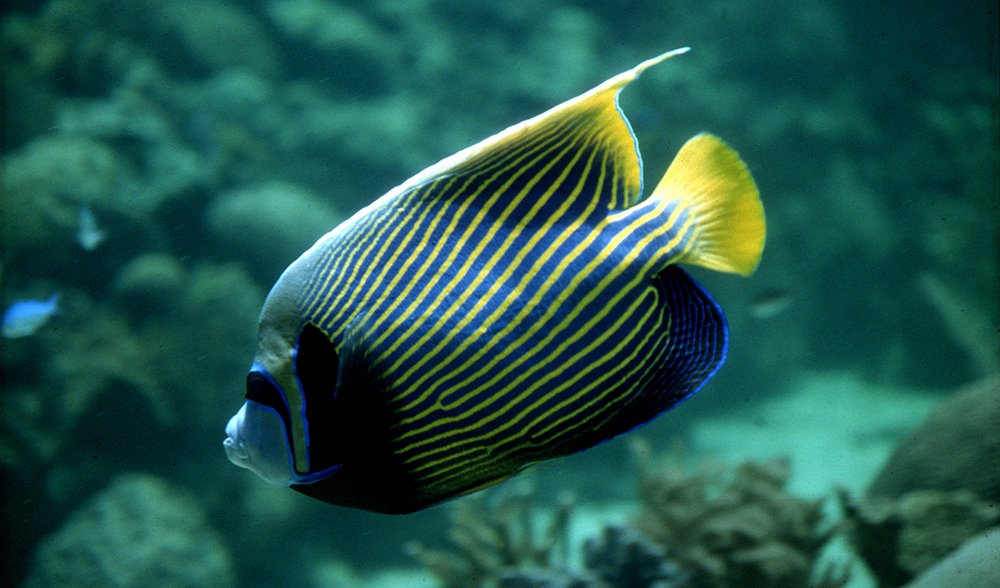Great Barrier Reef: a ‘hopping hotspot’

THE GREAT BARRIER REEF is a source of much national pride, but it’s nowhere near as Australian as our marsupials, parrots and eucalypts. Nearly all the life forms it supports live on other reefs in the Pacific Ocean, and often in the Indian Ocean as well. Some of the reef makers and reef dwellers range from the coast of Africa to waters around Hawaii and beyond. They are not, like a majority of our land animals and plants, unique to Australia.
Marsupials have ancestors that lived here tens of millions of years ago, but we can’t say that with much confidence about the fishes, corals and molluscs on the reef. From about 55 to 33 million years ago, the richest coral reefs on earth flourished in the western Mediterranean region. Fossils tell us that as time passed the Middle East inherited the world’s richest reefs, resulting in an ‘Arabian hotspot’.

The emperor angelfish (Pomacanthus imperator) is found on the Great Barrier Reef but has a vast distribution, extending west to Africa and east to Polynesia. (Image: Robert Kerton, CSIRO)
The zone of peak reef success then travelled to its current home, between Australia and South East Asia. Scientists talk about a ‘hopping hotspot’, about reef systems migrating across almost half the globe. Most of the animals on the Great Barrier Reef are thought to have ancestors that lived in the Tethys Sea, the stretch of water that became the Mediterranean Sea when Africa bumped into Asia. To give an important example, staghorn corals (genus Acropora) have yielded much older fossils in Europe than Australia. The larvae of corals and tropical fish are mobile enough that currents can carry them from one place to another.
Coral reefs do best where continental plates are in the early stages of collision. By approaching Europe, Africa generated vast shallow seas, ideal for corals. The final collision was bad for corals because the shallows were lost.
By drifting northwards Australia is now doing what Africa once did. The Australian and Pacific plates are creating shallow waters as they approach Asia. Many tropical species have probably evolved in these waters, though largely from ancestors of a similar appearance that spread from the west.
The bleaching that is killing so much coral today is a grave concern, but no one is fearing extinctions because the affected animals occur so widely. If equal areas of rainforest died, species would surely be lost.
READ MORE:
- Possums aren’t the gentle vegetarians you thought they were
- How an endangered species is clogging our pipes
- Australia was once full of flamingos

